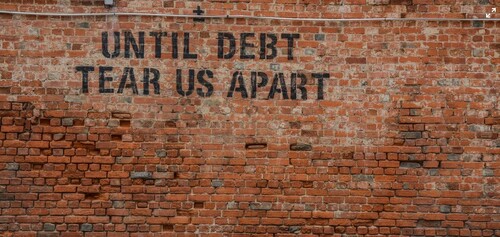P2PIncome | An Analysis on the Forms of Debt
What is Peer-to-Peer Lending?
Peer-to-peer lending is a new emerging asset class, that has shown time again, that the use of microfinance is beneficial in building and sustaining the economy. The term microfinance refers to the financial instruments that allow the use of small payments from hundreds and even thousands of people to fund one project. It can also be understood as crowdfunding, however, unlike Kickstarter, peer-to-peer lending refers to the use of borrowing capital rather than exchanging capital for a future product.

Peer-to-peer lending is popular all over the world from the east to the west and every place in between. Most countries have their variation of a peer-to-peer lending platform.
Peer-to-peer lending business models
There are various types of peer-to-peer lending business models. For every industry that exists in the world today, there is a peer-to-peer lending network that uses that industry as an niche to form an ecosystem. For example, there are real estate crowdfunding platforms like Reinvest24 and EstateGuru. These platforms use mortgages as collateral for large scale property developments.
Rather than approach 1 or 2 entities with millions of dollars, they target thousands of people with thousands of dollars. Both platforms have shown a great deal of success because of their ability to manage their lenders and borrowers. Because these platforms had their loans backed by high valued mortgages their investors have never been at risk.

There are also consumer lending platforms who don’t use any form of collateral and instead base their returns on the risk of the borrower. There are peer-to-peer business lending platforms, charity-based lending platforms, movie production-based lending platforms, and so on. All these variations of peer-to-peer lending have already successfully seeped into our society and have already established themselves as viable financial options.
Understanding The P2P Lender Borrower Ecosystem
The peer-to-peer lending ecosystem is not simply the returns that you make. It’s not good enough that you receive 14% in yearly returns from Swaper, you need to understand why. The entire business model needs to make sense for it to be sustainable. Even having no fees on a platform can be very alarming, and as investors, it makes us wonder – how does the platform stay profitable? Transparency is vital. There was a hit piece on Kiva, a charity-based peer-to-peer lending platform was using loan originators that were charging their poverty-stricken borrowers 25 to 35 percent in yearly interest, which is a very high rate.
This is why the business model needs to make sense. Some platforms will claim there are no fees for investors while charging their borrowers 30 percent interest. Those models are unsustainable and should be avoided. For the borrowers to pay their debts and for investors to be able to cash out. A well-managed ecosystem can weather the external turmoil of the economy. Platforms that can garner confidence among their borrowers and lenders are the ones that are able to provide consistent returns. Determining the value of the ecosystem is a very important step in your journey of investing in peer-to-peer lending.
Types of Debt
Most people are faced with debt in their lives. However, there is a great difference between a credit card bill for groceries and taking a mortgage on 200-thousand-dollar house. Let’s discuss the relevant types of debt.

Senior debt: this debt is the first debt that is paid back when the borrower defaults. It is generally at a low interest rate.
Junior debt: as opposed to senior debt, junior debt is paid back after the senior debt. It may come from a private lender or financial institution. It is secondary in terms of priority to the senior debt. It also has a higher interest rate due to the increase in risk for the lender.
Secured debt: this debt is secured by some sort of tangible object such as a car, a house, or intellectual property. In the case of a defaulting loan, the collateral or “security” will be given up to the lender for compensation. This type of debt is generally at a low interest rate due to decrease in risk from the collateral.
Credit card debt: everybody knows credit card debt. It’s unsecured, based on your credit score and it renews every month, or however you choose to set it up. Banks which generally issue credit cards issue them at low rates, as long as you pay the bills.
Unsecured debt: credit card debt is a form of unsecured debt. The overall umbrella term includes personal loans such as wedding loans, renovation loans, birthday present loans, and so on. Unsecured debt implies that there is no collateral backing the loan. Because of the lack of collateral, the risk and reward then become higher. So, you can expect to earn/risk more money investing in unsecured loans.
Mortgage debt: this kind of debt is one that individuals owe to the banks for purchasing property. Mortgage debt is great in peer-to-peer lending because it was one of the safest ways to invest in peer-to-peer. The rates are reasonably high for the low-risk endeavor that it is.
TLDR:
- Peer-to-Peer lending uses the same methods Kickstarter does, but instead of giving back a product they give back interest.
- Peer-to-peer lending is a very diverse market and have liquidity and financial solutions for many industries.
- Every platform has an ecosystem that they manage, and must manage it properly not only for lenders but borrowers as well.
- There are various types of debt that come with different levels of risk to the lenders.
